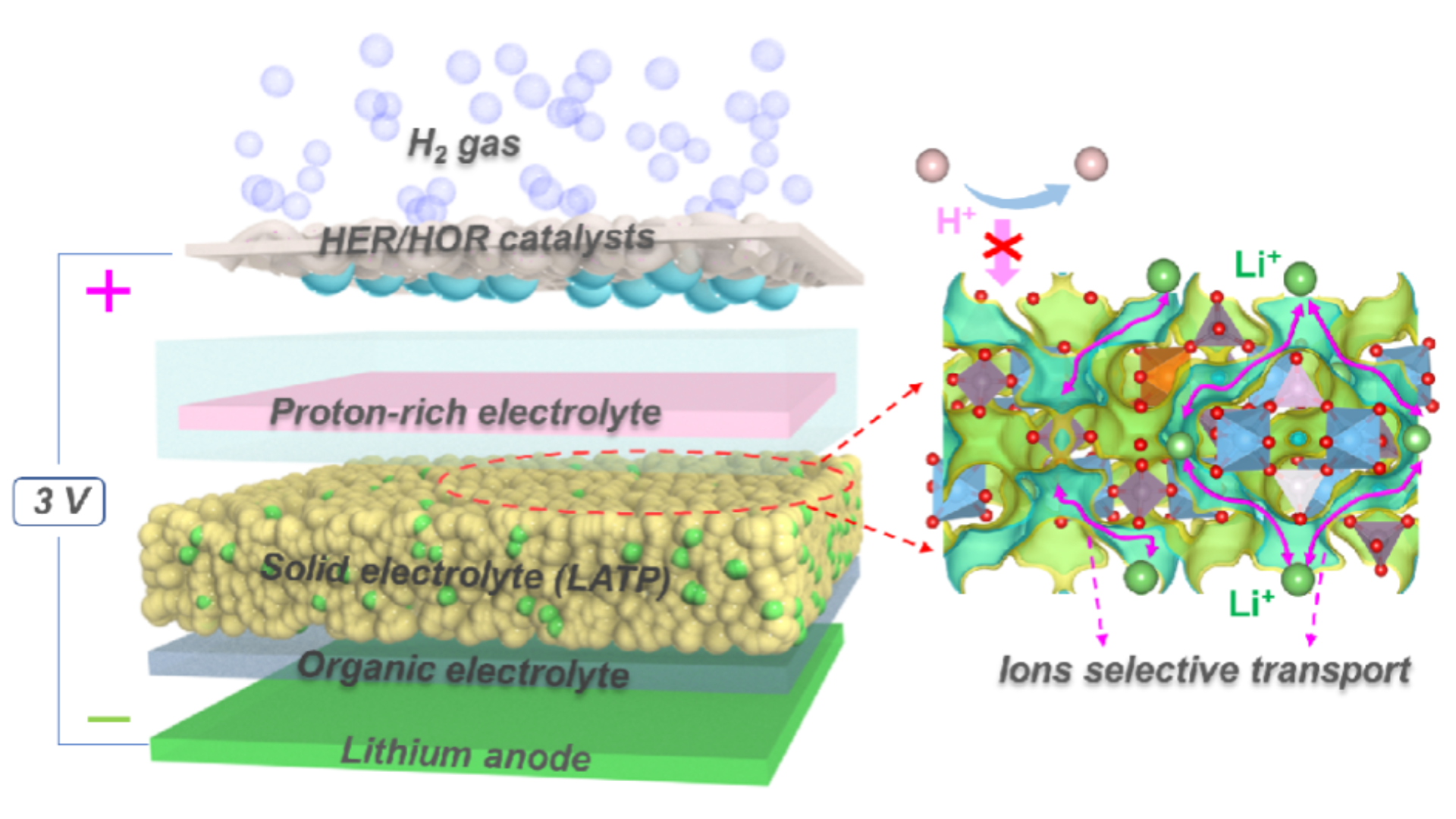A new study from the University of Science and Technology of China (USTC) can potentially elevate renewable grid energy storage and electric vehicles to unprecedented heights.
It involves a new type of chemical battery system that utilizes hydrogen gas as the anode instead of the conventional lithium derivatives. The research team published their findings in the Angewandte Chemie International Edition.
China’s new hydrogen EV battery hits 2825 Wh/kg energy density with 99.7% efficiency
USTC’s latest innovation introduces a safer, more sustainable future for battery-powered systems.

Stock photo: Hydrogen fuel cell concept.
Over the past years, hydrogen (H2) has gained attention as a stable and cost-effective renewable energy carrier due to its favorable electrochemical properties.
However, current hydrogen-based batteries primarily utilize H2 as a cathode. This restricts their voltage range to 0.8–1.4 V and limits their energy storage capacity. The batteries can only operate within a limited voltage window, which caps how much energy they can store and deliver.

The USTC research team went down an innovative path to improve battery performance and overcome this limit. They proposed utilizing H2 as the anode to enhance energy density and working voltage significantly.
The team engineered a prototype battery system with a configuration that allows efficient lithium-ion transport while minimizing undesired chemical interactions. Designated as the Li-H battery, this prototype includes a lithium metal anode, a platinum-coated gas diffusion layer serving as the hydrogen cathode, and a solid electrolyte (Li1.3Al0.3Ti1.7(PO4)3, or LATP).
Through rigorous testing, this new model displayed a staggering theoretical energy density of 2825 watt-hours per kilogram (Wh/kg), with a steady operational voltage of around three volts.
Moreover, the battery exhibited an exceptional round-trip efficiency (RTE: a measure of energy delivered versus energy used to charge the battery) measured at a staggering 99.7%, signifying minimal energy dissipation during charge and discharge cycles, with remarkable long-term operational stability.
To make this solution even more cost-effective and safe while enhancing manufacturability, the team developed an anode-free Li-H battery variant that eliminates the need for pre-installed lithium metal. Instead, the battery facilitates the deposition of lithium sourced from lithium salts (specifically LiH2PO4 and LiOH) during the charging cycle.
This new and improved version retains the advantages of the aforementioned Li-H battery while providing additional benefits. It enables efficient lithium plating and stripping with an impressive Coulombic efficiency (CE: is the ratio of the input and output charges) of 98.5%.
It also operates stably even at low hydrogen concentrations, reducing reliance on high-pressure H₂ storage. Computational modeling, such as Density Functional Theory (DFT is a computational quantum mechanical modeling) simulations, were also performed to get insights into how lithium and hydrogen ions move within the battery’s electrolyte.
This step in Li-H battery innovation provides new opportunities for advanced energy storage solutions, and the USTC’s research team has opened the doors for future explorations into lithium-hydrogen battery tech applications.
The impact of this finding can transform the performance and efficiency of renewable energy systems, long-range electric transportation, and next-generation aviation.
The Li-H system provides improved energy density and efficiency compared to regular nickel-hydrogen batteries. It is a strong candidate for the next-gen power storage systems of an increasingly electrified world moving towards decarbonization. The anode-free version has proven effective in establishing a pathway toward more affordable and scalable hydrogen-based batteries.
RECOMMENDED ARTICLES
ABOUT THE AUTHOR
Kaif Shaikh Kaif Shaikh is a journalist and writer passionate about turning complex information into clear, impactful stories. His writing covers technology, sustainability, geopolitics, and occasionally fiction. A graduate in Journalism and Mass Communication, his work has appeared in the Times of India and beyond. After a near-fatal experience, Kaif began seeing both stories and silences differently. Outside work, he juggles far too many projects and passions, but always makes time to read, reflect, and hold onto the thread of wonder.
The Blueprint Daily
Stay up-to-date on engineering, tech, space, and science news with The Blueprint.
By clicking sign up, you confirm that you accept this site's Terms of Use and Privacy Policy
DISCOVER
See AllRELATED ARTICLES
JOBS
Loading opportunities...




